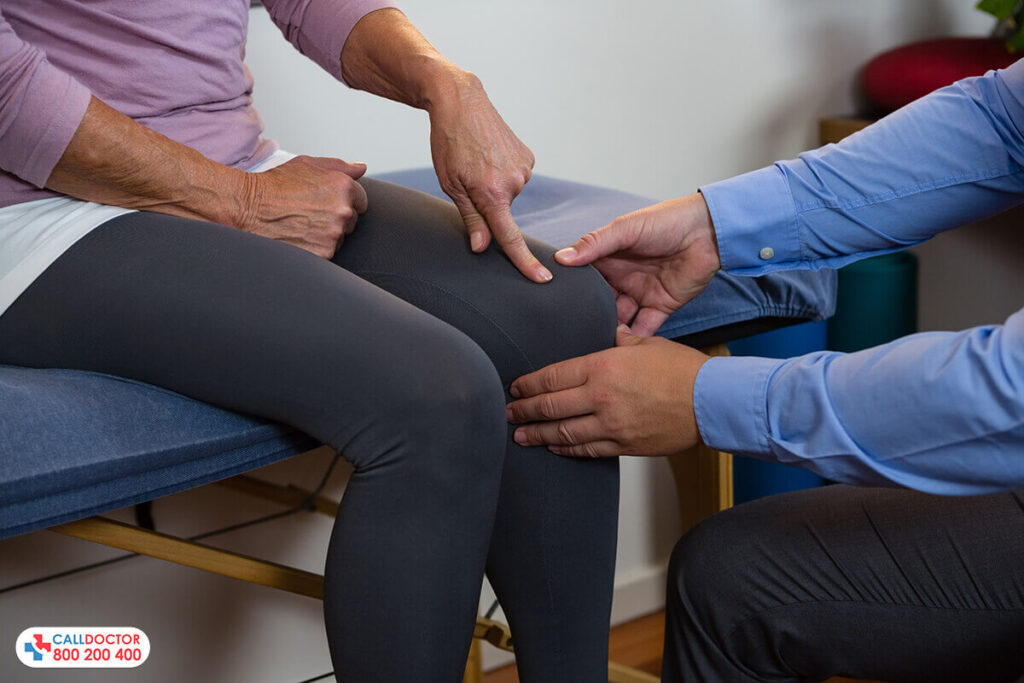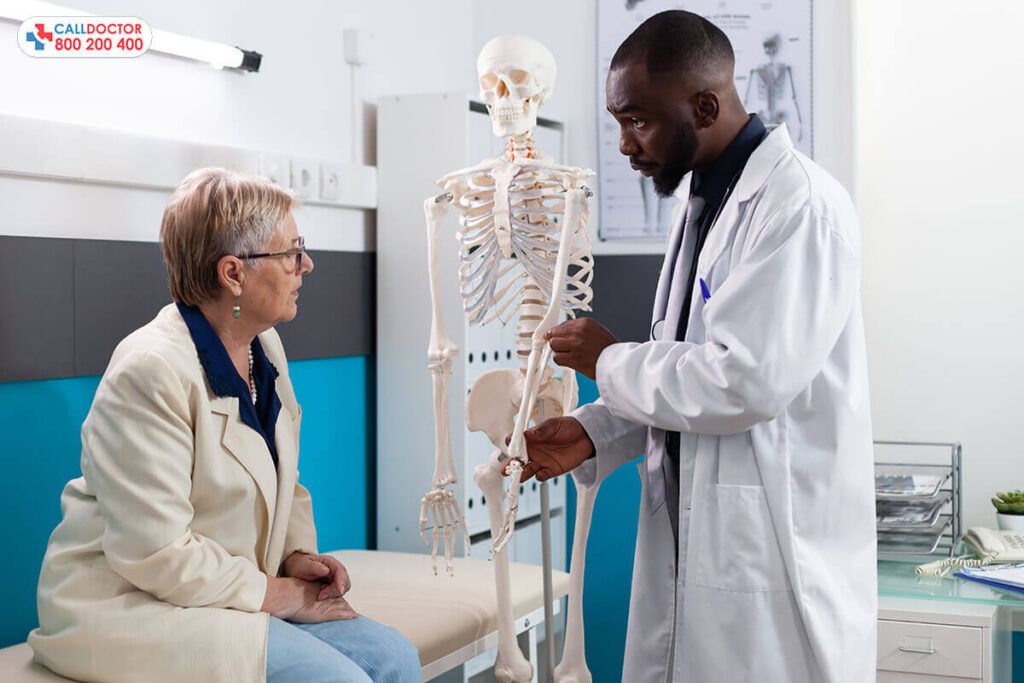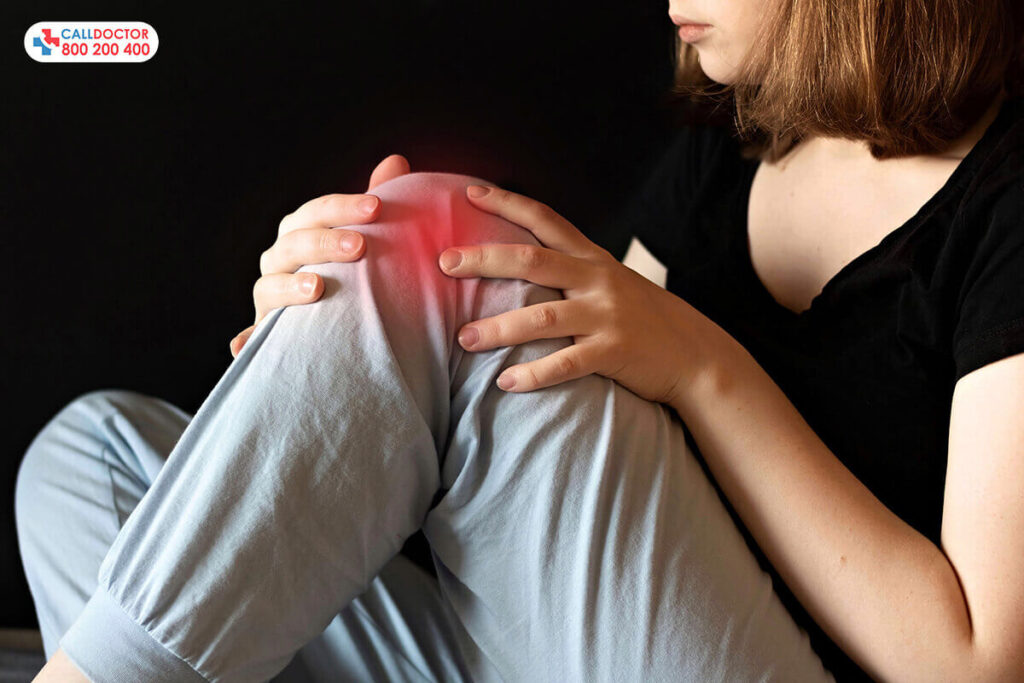Arthritis and osteoporosis are common musculoskeletal conditions, impacting millions worldwide and affecting daily life significantly. While these conditions pose challenges, simple lifestyle changes can mitigate symptoms, alleviate joint pain management, and safeguard bone health. This comprehensive guide explores five impactful lifestyle adjustments tailored for managing arthritis and osteoporosis, empowering individuals to care for their musculoskeletal well-being proactively.
Understanding Arthritis and Osteoporosis
Arthritis encompasses various inflammatory joint conditions, causing pain, stiffness, and reduced mobility. On the other hand, osteoporosis weakens bones, making them more prone to fractures. Both conditions demand proactive management to maintain joint flexibility, reduce pain, and protect bone strength.
Arthritis and osteoporosis are distinct musculoskeletal conditions, each with its causes and mechanisms:
Arthritis
Arthritis refers to a group of conditions involving inflammation of the joints. The most common types include osteoarthritis, rheumatoid arthritis, and gout.
- Osteoarthritis: Occurs due to joint wear and tear over time. Cartilage, the protective tissue covering the ends of bones, gradually wears away, leading to pain, stiffness, and reduced joint mobility.
- Rheumatoid Arthritis: An autoimmune disease where the immune system mistakenly attacks the synovium, the lining of the membranes surrounding joints. This leads to inflammation, joint damage, and deformity.
- Gout: Caused by the buildup of uric acid crystals in the joints, resulting in sudden and severe joint pain, often affecting the big toe.
These forms of arthritis involve varying factors such as genetics, age, injury, joint stress, infections, or an overactive immune system, contributing to their onset and progression.
Osteoporosis
Osteoporosis is characterized by weakened bones, making them fragile and more susceptible to fractures. It occurs when the creation of new bone doesn’t keep up with the removal of old bone tissue. The bones become porous and brittle, losing density and strength over time. Factors like aging, hormonal changes (especially in women after menopause), a lack of calcium and vitamin D, a sedentary lifestyle, certain medications, and family history contribute to the development of osteoporosis.
Both arthritis and osteoporosis have multifactorial causes influenced by genetics, lifestyle choices, and various environmental factors. Understanding these mechanisms helps adopt preventive measures and effective joint pain management strategies to alleviate chronic pain symptoms and reduce the risk of complications.

Lifestyle Changes for Arthritis and Osteoporosis Management:
Regular Exercise and Physical Activity
Engaging in low-impact exercises like swimming, Massage therapy in Dubai, cycling, or yoga helps strengthen muscles, improve joint flexibility, and reduce arthritis pain. Weight-bearing exercises such as walking or dancing aid in preserving bone density, which is crucial for osteoporosis management.
Maintaining a Balanced Diet
A nutrient-rich diet, including calcium, vitamin D, and omega-3 fatty acids, supports bone health and reduces inflammation. Incorporating dairy products, leafy greens, fish, nuts, and seeds contributes to bone strength and joint health.
Weight Management
Maintaining a healthy weight reduces joint stress, particularly for arthritis patients. Excess weight places additional strain on joints, exacerbating pain and discomfort. Adopting a balanced diet and regular exercise routine aids in weight management, benefiting arthritis and osteoporosis management.
Proper Posture and Joint Protection
Practicing good posture and employing joint protection techniques during daily activities minimize joint strain. Ergonomic modifications at home or work, using assistive devices, and avoiding repetitive motions help preserve joint function and reduce the risk of fractures.
Stress Management and Rest
Stress exacerbates inflammation and can intensify arthritis-related pain. Prioritize stress-relieving activities such as acupuncture, meditation, deep breathing exercises, or hobbies to manage stress levels. Additionally, adequate rest and quality sleep aid in tissue repair and reduce joint discomfort.
How Does Call Doctor Help in Arthritis and Osteoporosis Management?
Call Doctor emerges as a valuable resource in managing arthritis and osteoporosis. Through virtual consultations, individuals can connect with healthcare professionals specialized in musculoskeletal health. Our consultations enable patients to receive physiotherapy services and guidance on lifestyle modifications, medication management, and personalized treatment plans from the comfort of their homes.
Call Doctor’s convenient platform empowers individuals to seek immediate medical advice for joint pain management, bone health concerns, or queries related to arthritis and osteoporosis. Patients benefit from timely interventions, ensuring proactive management of their musculoskeletal conditions.

Conclusion:
Arthritis and osteoporosis need not hinder your quality of life. By implementing these five simple lifestyle changes and leveraging the accessibility of platforms like Call Doctor, individuals can take significant strides in managing joint pain, protecting bone health, and fostering a life of greater mobility and comfort.
1. What are the best exercises for arthritis?
Low-impact exercises like swimming, cycling, and yoga benefit arthritis. These exercises help strengthen muscles, improve joint flexibility, and reduce pain. Additionally, gentle stretching exercises and activities like tai chi can enhance joint mobility and overall well-being.
2. Can osteoporosis be reversed?
Osteoporosis cannot be completely reversed, but its progression can be slowed down or halted with appropriate treatment and lifestyle changes. Adequate calcium and vitamin D intake, regular weight-bearing exercises, and certain medications can help preserve bone density and reduce the risk of fractures.
3. How can one manage arthritis pain without medication?
Managing arthritis pain without medication involves various lifestyle modifications. These include maintaining a healthy weight to reduce joint stress, practicing proper posture, using heat or cold therapy, exercising regularly, applying topical treatments like creams or gels, and utilizing assistive devices for mutual protection.
4. What dietary changes can benefit osteoporosis?
A calcium and vitamin D diet is crucial for bone health. Include dairy products, leafy greens, fortified foods, fish, nuts, and seeds in your diet. Limiting caffeine, excessive alcohol, and sodium intake can also benefit bone density. Moreover, call the doctor for pain management and physiotherapy services.
5. Can arthritis and osteoporosis co-occur?
Yes, individuals can have both arthritis and osteoporosis concurrently. While they are distinct conditions with different mechanisms, they can coexist due to factors such as age, shared risk factors, and the impact of one condition on the other. Managing both conditions often involves a multidisciplinary approach, simultaneously addressing joint pain and bone health.




